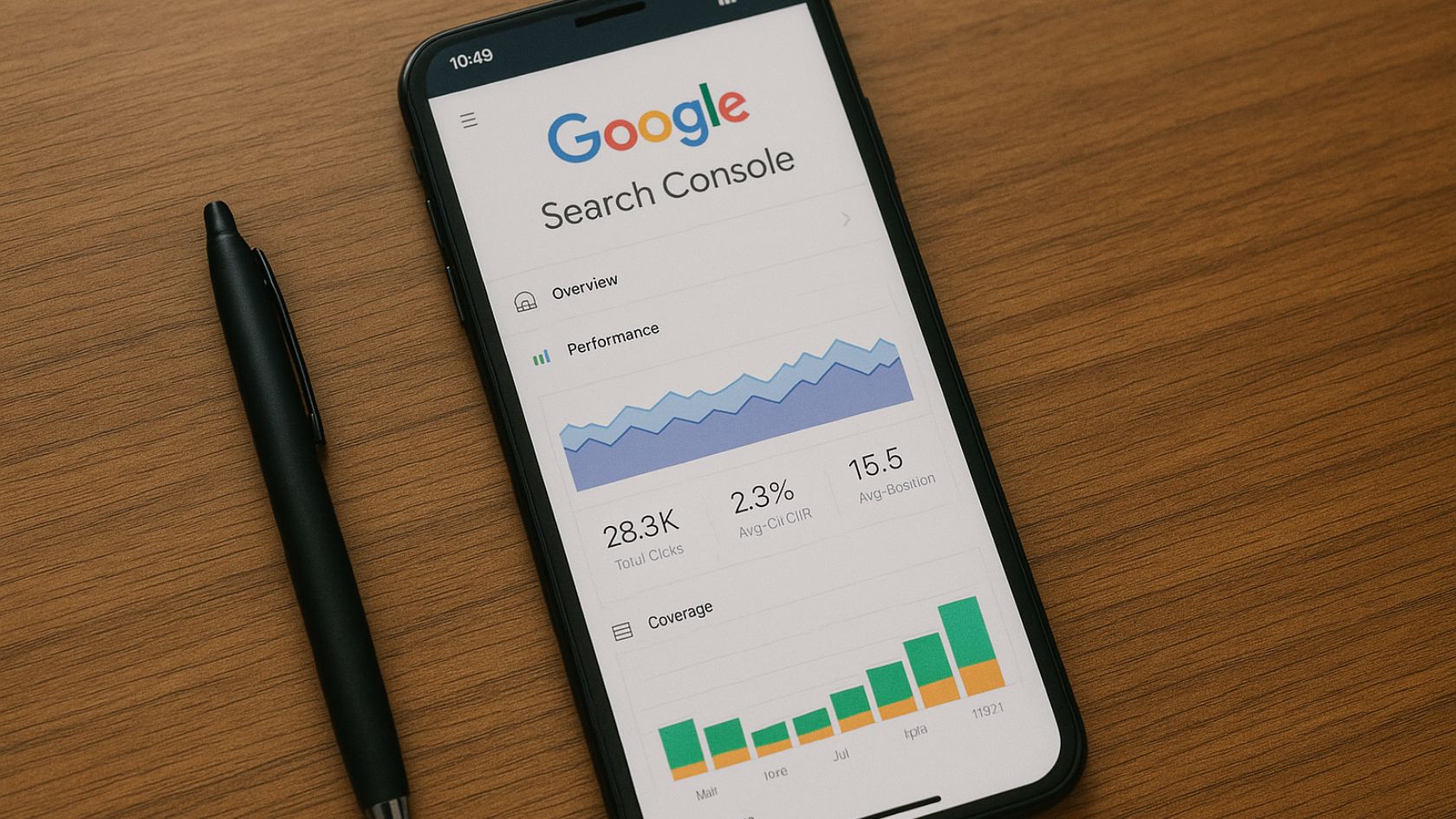
Mastering Google Search Console: The Complete 2025 Guide

Google Search Console is the free diagnostics and performance hub every SEO should master. If you want Google to crawl, index, and rank your pages better, you need a reliable workflow inside GSC that turns raw data into specific weekly actions. In this guide, you’ll learn how to set up, verify, audit coverage, optimize click-through rates, monitor Core Web Vitals, and convert insights into sustainable growth. Focus keyword: Google Search Console.
Before diving into reports, ground your approach with a simple principle: GSC is a measurement and feedback system. Use it to validate your hypotheses about content, technical health, and intent matching—and then iterate. If you’re completely new, this external primer on how to use Google Search Console offers a useful orientation; below, we’ll go further with practical, repeatable processes you can execute each week.
What you can do with GSC (at a glance): verify your site, submit sitemaps, monitor index coverage, analyze search queries and pages, improve CTR with better titles and snippets, evaluate Core Web Vitals, test structured data, validate fixes, and strengthen internal links. The value compounds when you build habits: check key reports weekly, annotate notable changes, and prioritize fixes that move the needle.
Think of GSC as your SEO cockpit: it’s not where you create content, but where you navigate and correct course. It also pairs well with complementary research and content strategy frameworks. For example, a data-driven playbook for social discovery can inform your keyword and topic clusters, while GSC validates search demand, impressions, and click behavior directly from Google’s own data.
1) Set up and verify your property
- Choose property type: Prefer the domain property (captures all protocols and subdomains) unless you need separate views for subfolders.
- Verify ownership: DNS TXT is the most robust method. Alternate methods include HTML file upload or meta tag placement. Keep the verification method active to avoid losing access.
- Grant access: Assign roles (Owner, Full, or Restricted) to collaborators. Principle of least privilege keeps your property secure.
Tip: If you use a CDN or headless setup, align verification and sitemap locations early to reduce confusion later.
2) Submit your XML sitemap
- Generate a clean sitemap that includes only canonical, indexable URLs.
- Submit at Index → Sitemaps, using the full path (e.g.,
/sitemap.xmlor/sitemap_index.xml). - Check the Discovered URLs count and monitor Last read timestamps to ensure Google is fetching updates.
Best practice: Keep sitemaps under 50,000 URLs each (or 50MB uncompressed); split large sites by section or freshness.
3) Fix index coverage issues fast
Navigate to Index → Pages (Coverage). Prioritize errors and warnings that impact important templates or high-value content. Common fixes include:
- Submitted URL marked ‘noindex’: Align meta robots and canonical signals.
- Alternate page with proper canonical: Consolidate duplicates; avoid thin variants.
- Excluded by ‘noindex’/robots.txt: Ensure only truly non-indexable pages are blocked.
- Soft 404/Redirect errors: Return accurate status codes; update internal links to canonical URLs.
After fixes, use Validate to trigger re-evaluation and watch statuses update over the next days or weeks.
4) Use the Performance report like a pro
The Performance report is your lens on queries, pages, countries, devices, and search appearance. Start by filtering Search type: Web and setting date range comparisons (e.g., last 28 days vs previous). Focus on:
- Queries with high impressions, low CTR: These are prime candidates for title/meta improvements.
- Pages with rising impressions but flat clicks: Enhance snippets, FAQ schema, or match intent better.
- Device splits: If mobile CTR lags, revisit titles that truncate early on small screens.
- Regex filters: Group branded vs non-branded queries, or isolate question queries like
^(who|what|why|how|when).
5) Lift CTR with better titles and snippets
CTR uplifts often deliver the fastest wins. Try these techniques:
- Mirror search intent: If queries are informational, lead with clarity (What/How/Why) before brand.
- Front-load value: Put the core benefit in the first 60 characters to avoid truncation.
- Use structured data: FAQ, HowTo, and Product markup can expand SERP real estate when eligible.
- Run controlled edits: Change one element at a time (title, then meta) and annotate the date to measure impact.
6) Monitor Core Web Vitals and Page Experience
In Experience → Core Web Vitals, track LCP, INP, and CLS across mobile and desktop. Improvements that frequently pay off:
- Largest Contentful Paint (LCP): Optimize hero images, preload critical resources, and reduce server TTFB.
- Interaction to Next Paint (INP): Limit heavy main-thread tasks, defer non-critical JS, and reduce third-party bloat.
- Cumulative Layout Shift (CLS): Reserve image/video dimensions, avoid dynamic ad shifts, and stabilize web fonts.
Tip: Validate improvements by checking field data over time rather than relying solely on lab tests.
7) Troubleshoot with URL Inspection
Paste a URL into URL Inspection to check index status, canonical selection, last crawl, and rendering. Use Test Live URL when your fixes aren’t reflected yet, and request indexing for priority pages. This is also a great way to ensure your structured data is detected and error-free.
8) Leverage structured data for rich results
Rich results enhance visibility and CTR. Start with FAQs, HowTo, Breadcrumbs, and relevant Product schema. Validate in GSC’s Search appearance and fix warnings that prevent eligibility. Keep markup in sync with on-page content and avoid spammy or misleading structured data.
9) Strengthen internal links
In Links, review your Top linked pages and Top linking text. Ensure cornerstone resources receive ample internal links with descriptive, intent-aligned anchor text. Build contextual links from related articles, category hubs, and navigation where appropriate.
10) International and site changes
- Hreflang: Ensure correct language/region alternates. Avoid chains and self-referential mistakes.
- Migrations: If moving domains or restructuring, preserve redirects, update sitemaps, and monitor coverage closely.
- Manual actions & Security issues: Check routinely; resolve quickly to prevent traffic loss.
11) Reporting and automation
Export performance data regularly for trend analysis. Annotate major content launches, technical changes, and Google updates. Build simple dashboards that combine GSC with analytics to correlate impressions, clicks, sessions, and conversions.
12) Weekly and monthly SEO checklists
Weekly
- Scan Performance for queries/pages with high impressions and low CTR; queue title/meta experiments.
- Review Coverage errors and warnings; validate resolved issues.
- Inspect priority URLs you’ve edited; request indexing when warranted.
- Monitor Core Web Vitals regressions on mobile.
Monthly
- Compare last 28 days vs previous period; note winners/losers and hypothesize causes.
- Refresh internal links to new or underperforming assets.
- Audit structured data warnings; expand eligible content types.
- Re-submit updated sitemaps if you’ve launched large sections.
13) Common pitfalls to avoid
- Counting impressions as intent: High impressions with low CTR may signal a mismatch—refine titles and content.
- Blocking critical resources: Robots.txt should not block CSS/JS needed for rendering.
- Inconsistent canonicals: Align canonical tags, sitemaps, and internal links.
- Overusing noindex: Avoid accidentally noindexing templates or tag pages that should rank.
14) Advanced tips and time-savers
- Regex segmentation: Separate informational vs transactional queries to tailor snippet strategy.
- Query clustering: Group semantically related queries to identify consolidation opportunities.
- Title testing cadence: Batch edits on a few pages per week; measure 2–4 weeks, then roll out winners.
- Edge cases: For faceted navigation or infinite scroll, ensure only unique, valuable URLs are indexable.
Conclusion: Turn GSC insights into weekly wins
Google Search Console turns vague SEO hunches into concrete actions. When you review Performance for low-CTR opportunities, keep Coverage clean, and steadily improve Core Web Vitals, you create momentum that compounds over time. Pair GSC with competitive and creative research—tools for market and native ad intelligence can spark new angles—then validate everything in Google’s own data. Make GSC your weekly habit, document changes, and focus on iterative improvements that align titles, content, and experience with searcher intent.